"Think about this for a moment; 553 golfers went to Asian Tour School this year and just forty seven (8.5%) earned a card." 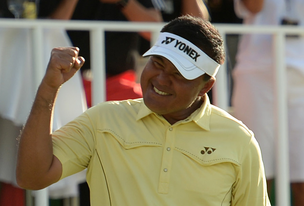 Mardan Mamat a Top Asian Tour Golfer Mardan Mamat a Top Asian Tour Golfer Over 420 elite amateur and professional golfers from thirty three countries around the globe entered the first stage of Asian Tour School this year to try and earn playing rights for this season. Of the more than 420 entries for first stage, the top twenty two percent from three qualifying courses in Thailand, just ninety seven golfers made it through to the final stage and a chance to play for pay on the Asian Tour. One hundred and thirty one golfers were exempt from the first stage of qualifying and went straight to the final stage where they were joined by the ninety seven who were good enough to get through the grueling first stage qualification process. Of the 231 players in the field for the final stage just forty seven (20.3%) earned a card and the privilege of playing on the Asian Tour. Think about this for a moment; 553 golfers went to Asian Tour School this year and just forty seven (8.5%) earned a card. No walk in the park right?  So how good did you have to be to earn a card?... Well, let’s begin by discussing the 276 golfers who had to go through first stage this year and let’s look at the minimum playing standard required before you could move on to the final stage. Golfers were split into four groups over two weeks and between three layouts. For the first week Section A golfers competed at Singha Park Khon Kaen Golf Club, Khon Kaen, and the Imperial Lakeview Golf Club, in Hua Hin. Week 1 - Section A Group Just twenty five golfers competed at Singha Park Khon Kaen Golf Club, and nine out of the twenty five qualified on a score of six over par or better (294) over seventy two holes which meant that you needed to score 73.5 on average at this golf course to move through to the final stage. Eighty golfers competed at the Imperial Lakeview Golf Club, and the leading twenty two qualified and moved through to the next stage with a score of even par (288) or better over seventy two holes. Week 2 - Section B Group In the second week there were eighty three Section B contestants competing again at the Imperial Lakeview Golf Club in Hua Hin and the leading thirty one golfers qualified with a score of three over par (291) or better over seventy two holes which meant that the minimum playing standard required for this course was .75 under par per round, or a 71.25 average to make it through to last stage. In the other Section B group eighty eight players teed it up at the Springfield Royal Country Club in Hua Hin and the leading thirty five qualified on five over par (293) or better over seventy two holes, and the minimum qualifying standard at this golf course was 1.25 over par per round or 73.25 or better each day over seventy two holes to move through to the next stage. Over two weeks ninety seven golfers or thirty five percent of the 423 golfers qualified through the first stage of Asian Tour School qualifying.  Daniel Chopra Winner of Asian Tour School Daniel Chopra Winner of Asian Tour School The Final Stage In the final stage two hundred and thirty one golfers teed it up at two venues, Springfield Royal Country Club and Imperial Lakeview Golf Club in Hua Hin Thailand. The cut after two rounds was one over par which quickly sliced the field of two hundred and thirty one golfers back to one hundred and two for the final two rounds. Just 102 golfers left out of 553. The Swedish professional golfer Daniel Chopra came out on top as medallist at Asian Tour School this year with a seventy two hole total of fifteen under par, and four shots clear of Finnish golfer Kalle Samooja on eleven under par. Chopra is a very experienced campaigner and has played on a number of professional golf tours over the past twenty three years. He has twice won on the PGA Tour and has previously played on the European Tour and the Asian Tour. To secure the last card you needed a four round total of one under par, and eleven golfers had this score and all tied for thirty seventh. Click on the images to make them larger What You Can Learn from this... In the final analysis you can see that if you look at the qualifying scores per venue, the highest score you could shoot over seventy two holes was 1.5 over par on average per round, and the lowest average per round works out at .25 under par. This is important to consider if you are preparing for any tour school in the future. You can see from our simple analysis that over eight rounds (144 holes) you need (at a minimum) to be capable of scoring around par to have the slightest chance of securing a tour card. We look at the numbers produced at tour schools around the world every year and one thing is certain; you must be able to produce par or better over many rounds to have any chance at all of earning income playing professional tournament golf. Ask yourself honestly how many rounds out of the last 100 were par or better in tournaments (amateur or professional). To qualify for a tour school, make a lot more money than you spend and make a lot more cuts than you miss, you should be at least 25 under par for your last 100 competitive rounds of golf.
 If you ask average to serious golfers what they want to improve in their game, they would most probably answer that they want more consistency. Fair enough, that makes sense, who doesn’t want a more consistent game? After all, golf is a challenging game and to build consistency into it just reduces the uncertainty factor a little. But is it possible to be a consistent golfer? Well, to answer this question we must understand that we are talking about mainly two things, consistency of behavior and consistency of results. So let’s discuss these factors and see whether it is possible to obtain consistency in our behavior and results. To do this, let’s look at the four incontrovertible effects that are the main factors influencing your results on the golf course;
 A Consistent Stroke Type Can you be consistent at producing different types of golf strokes? The short answer is no, as no two stroke types you produce are ever the same, but they can be similar, and this is important to understand and remember. You cannot produce one stroke exactly like the next one as there is always a slight difference between them, however, you can practice a particular stroke type many times so that there is less difference between them. This is why you have to practice repeating strokes as accurately as you can many times over to improve your golf swing. You practice strokes accurately to automate your stroke which releases you of much of your conscious thought so you can play more by feel and instinct. At this level your golf stroke will be about as consistent as it’s likely to be. Remember Persistent Practice Influences Permanence 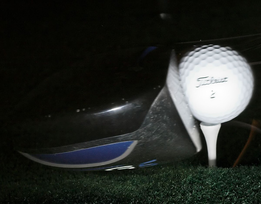 A Consistent Collision with the Golf Ball Can the impact or collision with the golf ball be consistent? Sorry, again the answer is no. No two impacts with the golf ball are ever the same, but they can be similar. Because every golf stroke is different so too must the impact with the golf ball be different. When the club-face collides with a golf ball the total contact time where the ball is squashed against the face of the club is just under 0.5 of a Millisecond, or about 400 Microseconds. So during this impact interval, there’s absolutely nothing that you can do to influence the golf ball and what it will do. When the golf ball releases itself from the club-face, it is responding blindly to the information that the golf club transferred to it. The first time that you recognize the feeling of impact, the ball is already more than 15 yards away from you. 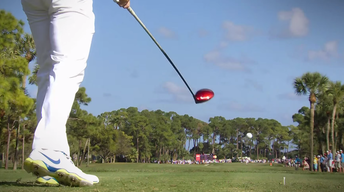 A Consistent Ball Flight Can you develop a consistent ball flight? I think you know the answer to this already, no you can’t. No two ball flights are ever going to be exactly the same because the spinning rate of the ball will be slightly different in every stroke you produce, but they can be similar. When the golf ball travels through the air it is subject to a whole host of factors that affect what it does. Air density, drag and gravity are just three variables that will affect the balls flight making it virtually impossible for you to hit two shots the same.  There is something that will help you to produce similar ball flights from shot to shot. The ball flight imagery can be consistent from one stroke to another and because you have a consistent mind-set as it relates to the flight of your ball, the signal from your brain to the muscles to move the golf club and ball can be very similar. A Consistent Environment Can the environment you play golf in be consistent? No, it also can never be consistent, the best you can hope for is similar conditions from day to day, but this is mostly dependent on the season and where you live. The most consistent thing about the environment is that it is always changing. So when you weigh it up, you cannot have a golf stroke that is consistent, therefore you cannot have an impact with the golf ball that is consistent and the resultant ball flight that you produce will also not be consistent. And if that wasn’t enough, the conditions you play in from day to day won’t be consistent either. A Consistent Score So the conclusion is that you cannot develop consistency of stroke, impact and ball flight, and as a consequence you also cannot have consistent scoring from day to day. Even if you played 4 rounds in a tournament and had the same score everyday (which is unlikely), how you achieved the same score result would be very different from shot to shot. So consistency in golf is a myth, the best you can hope for is to practice to the extent that the difference between these elements is so similar that it looks like you are the most consistent golfer in your group. Lawrie Montague and David Milne - Pro Tour Golf College The Professional Golf Tour Training College How to Decrease Your High Scores on the Golf Course by Improving Your High Pay-Off Golf Skills5/2/2015
Golf is a harder game to play as you get your score average closer to par. The main reason is that you cannot make the same level of mistakes that you made when you had more handicap to play with. Now I know this is obvious but nonetheless the reality for every golfer is that golf is more a game of mistakes than it is excellent shots, and so the idea is for you to reduce the amount of mistakes you make in order to continue to lower your score average. So how do you do that? Well, you could spend a lot of time improving your golf swing technique so you can hit longer and straighter shots more often. You could improve your putting and short game skills to reduce your mistake average on and around the greens. These are all good ideas but there are many ways you can practice to improve your golf scores other than the obvious way’s, but what’s interesting is that we have noticed that as golfers get better with scores closer to par they quite often focus most of their energy on one or two skills at the expense of other skills that we call “high pay-off skills.” Let me give you a simple example of what I mean… 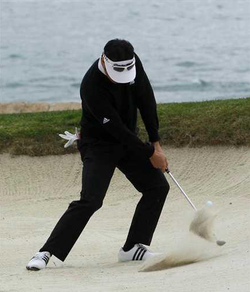 Develop Your High Pay-Off Skills How many different bunker shots have you mastered up to this point in your golf career? Do you have just one type of bunker shot method that you use to play all the different types of conditions you face in a bunker, or do you have other options?
What about your ability to hit shots with a curve or different trajectories?
I could go on but I think you get the picture.  Building Shot-Making Capability You have to build a large and varied base of long and short shots as your scores get closer to par. If you spend most of your time practicing the shots you are already competent at you are setting yourself up for big surprises on the golf course that you aren't going to like. How many times during a round (especially when you are not playing your best) do you get confronted with challenging shots that you struggle to play competently? I vividly remember watching a show reel of Bobby Jones the great American amateur golfer who challenged a pupil he was instructing to play against him but the twist was that Bobby would play golf from where the pupil hit his tee-shots and the pupil could play from Bobby’s tee-shots. Needless to say Bobby Jones recovery shots from awful positions off the fairway were nothing short of miraculous, and in contrast his student even from a position in the middle of the fairway was not able to produce lower scores than Bobby Jones. Remember the nature of golf is that it is a game of mistakes first and foremost, and the real skill is to manage the challenging shots in an expert fashion.  Building Shot-Making Confidence Try not to play a high percentage of perfect looking golf shots on the golf range (especially off mats), but instead learn how to play effective recovery strokes out on the golf course to learn how to keep your golf score under control. From round one to round four in a tournament the golf course will continuously change from tee and pin placements through to the weather conditions. If you never spend enough time practicing the tough shots that you will face on the golf course in every round you play, you will never develop the ability to adapt to the changing conditions. And this will be your “Achilles heel,” the factor that will lessen your ability to reduce mistakes in your rounds. The one factor that you must continually develop is the ability to recover successfully from challenging situations equally as well as if you were playing from the center of a fairway. When you practice the recovery shots often you build up a thicker layer of confidence in your shot-making capability to help you to overcome the many challenges the game will present you. So the next time you go to the golf range to practice plan to practice some hooks and slices, some high and low shots, and instead of placing your ball on great lies drop each ball as if you were taking a penalty and play your shots from the lies you get. On the putting green, practice the extra-long putts over 30 feet and also the side-hill breaking short putts of 3 feet to 10 feet to develop your confidence in these challenging types of putts. Remove the surprise effect from your game and I guarantee you that you will lower your golf score and become a much more consistent golfer. Lawrie Montague and David Milne – Pro Tour Golf College The Professional Golf Tour Training College Click on the image above to find out more about our golf programs at Pro Tour Golf College
|
Archives
June 2019
|
Proudly Supported By
Copyright © 2011 - 2018 Pro Tour Golf College
Website Managed By Golf Performance Media
All Rights Reserved
Website Managed By Golf Performance Media
All Rights Reserved

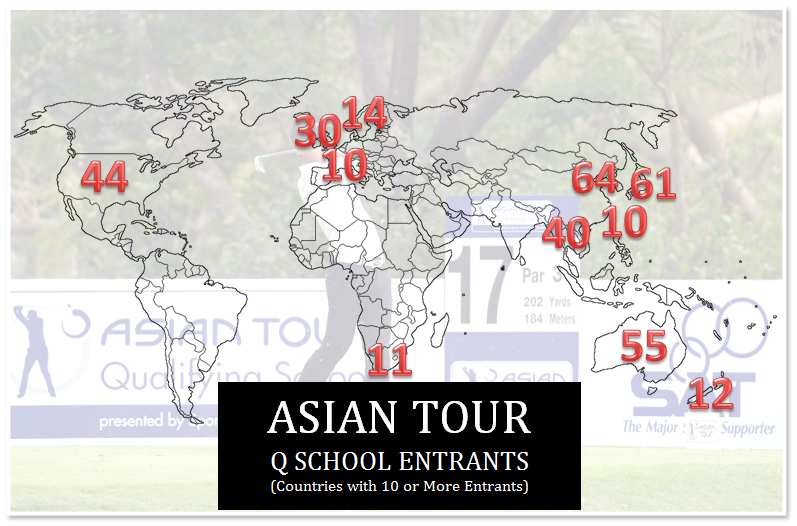


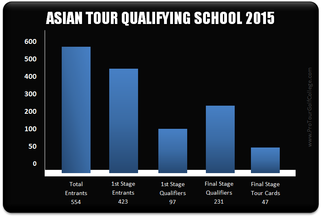







 RSS Feed
RSS Feed



